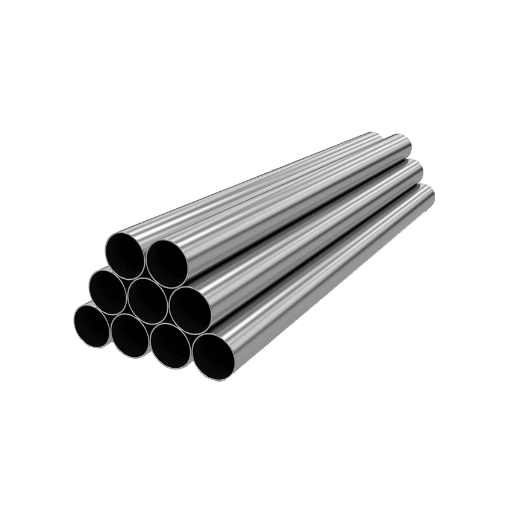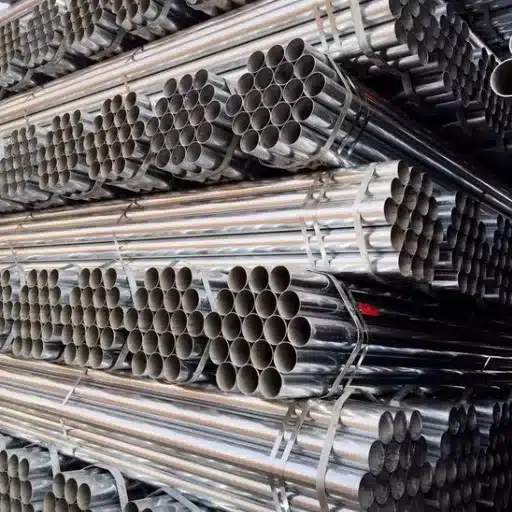Welded pipes serve as vital components across numerous industries, playing an essential role in everything from construction and infrastructure to energy and manufacturing. These pipes are integral to systems that demand durability, reliability, and precision. From seamless designs that ensure enhanced strength to stainless steel variants renowned for their corrosion resistance, the world of welded pipes offers an impressive diversity of options tailored to specific applications. This article dives into the nuances of welded pipes, examining their types, manufacturing processes, and key benefits to help you better understand their importance and how they meet the demands of modern engineering and industrial challenges.
What is a Welded Pipe?
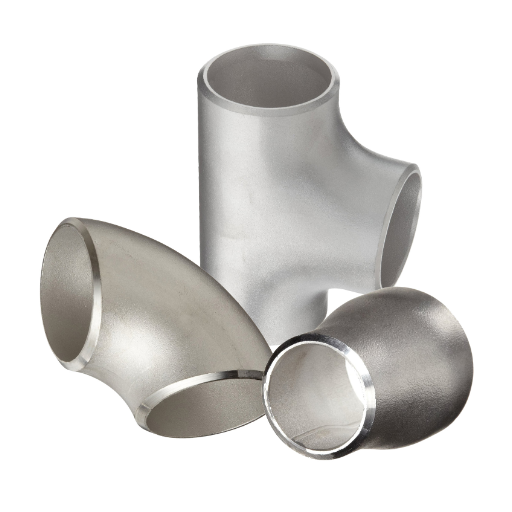
How are Welded Pipes Manufactured?
Welded pipes are produced using an intricate and systematic approach that consists of several stages, each adding value and resulting in a strong piping structure. The primary step is choosing a particular type of steel sheet or strip, which serves as the base material. The base material goes through a preparatory step where it is trimmed, scrubbed, and styled to the precise height and breadth required for the pipe. This guarantees consistency and value in the end piping product
Further, a steel sheet is transformed into a tubular shape. This is usually done either by roll-forming or press-forming, based on the specific pipe type being manufactured. The tube has to undergo several procedures from being squared to being welded. For welding, two techniques are most popular, Electric Resistance Welding (ERW) or Double Submerged Arc Welding (DSAW), which provide adequate melt or fusion along the entire pipe length, ensuring long-term use without having joints in the pipe.
At last, the welded pipe is subjected to rigorous post-processing and inspection steps to ensure that the structure is intact and operational. This involves processes like stress-relief heat treatment to remove internal stresses, non-destructive testing for flaw detection, and surface finishing to improve corrosion resistance. After these processes are done, the welded pipe can be utilized in various sectors such as construction, oil and gas, and water distribution systems.
Difference Between Welded and Seamless Pipes
Welded pipes and seamless pipes are different in their manufacturing processes as well as their uses. Welded pipes are formed by taking flat steel plates and coils and rolling them into tubes. The edges are then joined by welding. This process leaves a weld along the outside of the pipe, which is aesthetically pleasing and accessible for maintenance. Seamless pipes, on the other hand, are made by extruding or piercing a solid billet, which creates a pipe without the need for welding.
Some advantages of seamless pipes are their increased strength, better pressure resistance, and uniform internal structure, making them optimal for high-pressure and high-temperature applications, like those found in the aerospace, nuclear, and petrochemical industries. Welded pipes, while slightly weaker than their seamless counterparts, are more affordable, easier to obtain, and manufactured in larger diameters. This makes such pipes suitable for low- to medium-pressure applications in construction, water distribution, and oil and gas industries.
Another area of difference is in the maintenance and inspection measures. For welded pipes, the testing of the weld seams is extensive, but seamless pipes do not have such testing requirements because they are made in one piece. Ultimately, the decision comes down to the cost, application, and operational requirements, such as pressure.
Applications of Industrial Welded Pipes
The flexibility in design and the capability to withstand a diverse range of operational conditions make industrial welded pipes cost-efficient and widely utilized across multiple sectors. They are specifically useful for the transportation of fluids like water, oil, and natural gas through pipelines over short and long distances. Critical infrastructure tends to face different forms of pressure and environmental factors, which is why having reliable pipes is important, and industrial welded pipes prove to be ideal.
Apart from critical infrastructure, these pipes are crucial in structural and construction applications. Industrial welded pipes are essential in both residential and industrial buildings as scaffolding, framing, and supporting structures due to their customizable dimensions and lighter weight without compromising strength. The precision with which the pipes can be fabricated into specific sizes ensures that the carved-out pipes can integrate into intricate architectural structures while meeting precision safety standards.
Welded pipes are also heavily relied upon by the manufacturing and chemical processing plants. They require controlled environments for steam, chemicals, and other process fluids. Industrial welded pipes are perfect in these situations since they are ductile and can adapt to harsh chemical exposure without any issues due to advanced surface treatments and material selection, which improves the pipe’s corrosion-resistant properties. The adaptability of industrial welded pipes in various sectors makes them crucial for modern infrastructure and other industrial operations.
Understanding Steel Welded Pipes
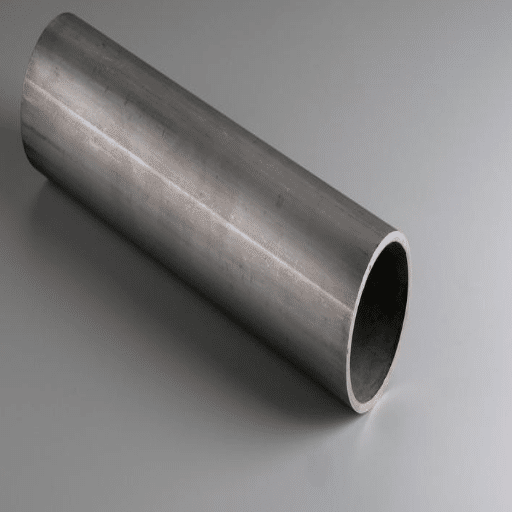
What Materials are Used in Steel Welded Pipes?
The selection of the materials that are steel welded pipes is based on including mechanical properties, chemical composition, and application of specific requirements. The most popular materials include carbon steel, stainless steel, and alloy steel.
- Steel Pipes: Widely used in construction, automotive, and energy industries. These are carbon pipes that include ASTM A53 or API 5L. These are economical yet highly durable and strong, making them effective in dealing with moving pressures and structural loads.
- Alloy Steel: Specifically engineered for high-performance uses in power generation, aerospace, oil, and gas, is remarkable. These pipes deal with extreme temperatures and pressures while being supremely strong, resistant to wear, and reduced. This is made possible due to additional elements like chromium, molybdenum, and nickel.
- Stainless Steel: For working within extreme environments, as in severe seas or chemical processing plants, stainless steel is effective as it possesses unparalleled corrosion resistance. Not only this, but readily available 304 and 316 austenitic grades give results special for facing oxidation, heat, and chemical attack.
Selection of materials is further refined in relation to their use in advanced processes like heat treating, welding, and surface finishing with the intent to satisfy the requirements of particular industrial applications.
Advantages of Using Steel Welded Pipes
Welded steel pipes have low manufacturing costs and great durability, all while being versatile, leading to their preferential use in a multitude of industries. Their manufacture begins with the rolling and welding of steel plates or strips, which form a strong seam. One of the greatest benefits of these welded pipes comes in economic feasibility as the manufacturing process, in comparison to seamless alternatives, uses fewer raw materials, resulting in lower production costs.
Steel welded pipes have dependability when it comes to fluid and gas transport due to their large diameter and customized length capabilities. Apart from dependability, they also have excellent corrosion resistance when made from stainless steel or alloyed steels, which greatly increases their lifespan in harsh conditions encountered in chemical processing plants or offshore oil platforms. Due to recent innovations in industries, laser or high-frequency induction welding is available and improves the accuracy of the pipes, ensuring they conform to demanding industry regulations.
Moreover, steel welded pipes are useful for water transport, city infrastructure, and extreme pressure applications in power plants and petrochemical plants. Due to their mechanical strength, price, and adaptability to modern technology, steel welded pipes are crucial in meeting today’s industrial needs.
Common Specifications for Steel Welded Pipes
We produce Steel welded pipes according to different standards and checks so that they can perform reliably. The following are some of the specifications related to these pipes:
- Standards and Grades: Different welded pipes are produced by different companies within the bounds of the ASTM A53, ASTM A252, and API 5L. These criteria include chemical makeup, hauling power, and shaving as per relevant conditions.
- Thickness and diameters: Welded steel Pipe diameters start from as low as ½ inch to over 100 inches, depending on the material’s application. Wall thickness is classified using systems like SCH 40, SCH 80 for Pr-Standardization, and caters to a multitude of strong pressure-rated rated for vehicles.
- Pressure Ratings: Depending on the supplied and consumed steel grade, manufacturing methods, pipe wall thickness, diameter, and expandable interfaces used, these specs are made. Examples include welded steel pipes in oil and gas systems that are obliged to serve extreme conditions with high pressure tolerances out to beating benchmarks of often regular 5,000 psi.
- Coatings And Liners: With the welding level of security needed, dealing with pipes needing to be covered from the outside in fusion bonded epoxy (FBE) shell, polyethylene, or galvanized finish. Marking permanent resistance further aids others from mortar putting cement under the level of polyethylene; these coatings serve to widen damage, protecting it from wear along with increasing the durability, making it sturdy.
- Weld Types: The welding method affects the performance of the pipe. The main methods are Electric Resistance Welding (ERW), Longitudinal Submerged Arc Welding (LSAW), and Spiral Submerged Arc Welding (SSAW), which are tailored to particular applications.
- Inspection and Testing: Compliance with ultrasonic and radiographic inspections, hydrostatic pressure testing, and chemical analysis, along with strict testing, ensures design specifications and reliable long-term performance.
As such, these standards outline precise requirements for the steel welded pipes designed for industrial use, ensuring operational use while meeting safety and structural strength standards.
Exploring Stainless Steel Welded Pipes
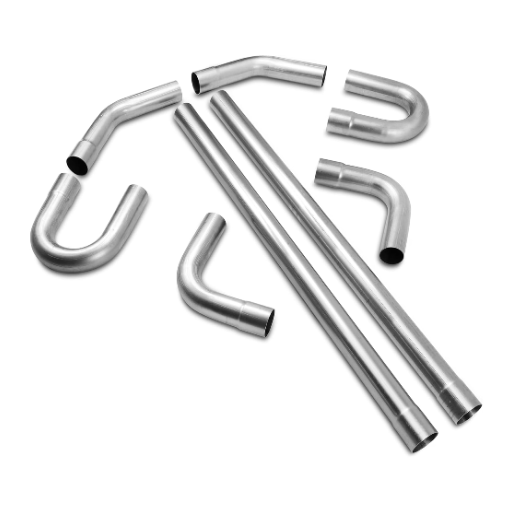
Characteristics of Stainless Steel Welded Pipes
Stainless steel welded pipes stand out due to their reliability and versatility, as their strength makes them withstand the rigorous demands of industrial applications. The processes used to manufacture them involve bending and welding stainless steel sheets, which ensures uniformity in wall thickness and precision in the overall structure. These pipes are welded utilizing advanced automated methods like TIG (Tungsten Inert Gas) or laser welding, which provide a seamless and robust joint in compliance with stringent industrial standards.
Notable features of these pipes are their superior corrosion resistance, which is particularly vital in harsh and chemical, moisture, or temperature-exposed environments. This property allows for application in a range of industries like oil and gas, power generation, chemical processing, and desalination plants. Moreover, stainless steel welded pipes display excellent mechanical properties like durability and high tensile strength that enable the efficient transfer of fluids and gas, even under high-pressure conditions.
The customized precision of modern technologies enables alteration of surface finishes, dimensions, and alloy compositions. Grades 304, 316, and duplex are examples that show tailored resistance to corrosion and mechanical strength depending on application needs. Seamless variants may excel in fabrication, but welded pipes are considerably more cost-efficient, making them the preferred choice in a lot of large-scale projects.
Corrosion Resistance in Stainless Steel
The reason for the corrosion resistance of stainless steel is its chromium content, which varies from 10.5 % to 30 % depending on the alloy grade. When chromium is added to the alloy, it combines with oxygen to form a chromium oxide, which acts as a protective layer and stops further corrosion reaction. This passive layer is self-healing, which means that in cases where it is mechanically or chemically damaged, as long as oxygen is present, it can regenerate.
Chromium alloys have differing resistance to varying corrosive environments. For example, 316 and 304 austenitic grades have high molybdenum and nickel content,t which improves their resistance to chemical, industrial, and marine corrosion. On the other hand, duplex stainless steels have high-strength alloys and excel in resisting stress corrosive cracking, so they can be put to use in gas and oil or desalination industries.
Chromoly has many different types, each one engineered for a specific purpose. Super austenitic and super duplex steel alloys are the most recent chromoly additions and proven to work best in areas that have high amounts of chloride and acidic materials. To stand up to the demands and reliability required from these materials, they go through many electrochemical tests, like salt spray testing and cyclic potentiodynamic polarization. Through proper materials selection and regular maintenance, stainless steel offers a sustainable economic option for different sectors needing corrosion-resistant technologies.
Why Choose Stainless Steel Welded Pipes?
Stainless steel welded pipes are noted for their impressive strength, durability, and adaptability to a variety of uses. In comparison to welded ones, seamless pipes tend to be more expensive due to the intricate processes involved in their manufacturing. Welded pipes offer tremendous value as they are made from steel plates or coils and welded into a singular piece. Like seamless pipes, they maintain efficiency and reliability welded stainless steel pipes are renowned for. Unlike other types of pipes, these welded pipes show phenomenal resistance to corrosion, which often happens with exposure to moisture, acids, and chloride-filled atmospheres. The steel used in making these pipes contains chromium, which aids these pipes in self-repair in the event of material degradation.
An additional perk that comes with stainless steel welded pipes is that they can be sourced in a multitude of grades, such as 304 and 316L. Grade 304 provides more than enough corrosion resistance required during general usage, but grade 316L contains higher amounts of molybdenum, which leads to better performance in marine environments and chloride-rich areas. Moreover, these pipes can be custom-made to fit certain set structural and dimension requirements, which allows use in a plethora of industries such as oil and gas, chemical processing, power generation, and construction.
The development of newer welding technologies is driving an increase in the adoption of stainless steel welded pipes. The use of laser and tungsten inert gas (TIG) welding has further refined the accuracy of welded seams, boosting pipe functionality in critical operations. The stainless steel welded pipe market will continue to grow due to heightened construction works and increased demand for water treatment systems. This positions stainless steel welded pipes as reliable and adaptable for contemporary engineering problems while supporting enduring sustainability and cost-efficiency.
The Role of Seamless Steel Pipes
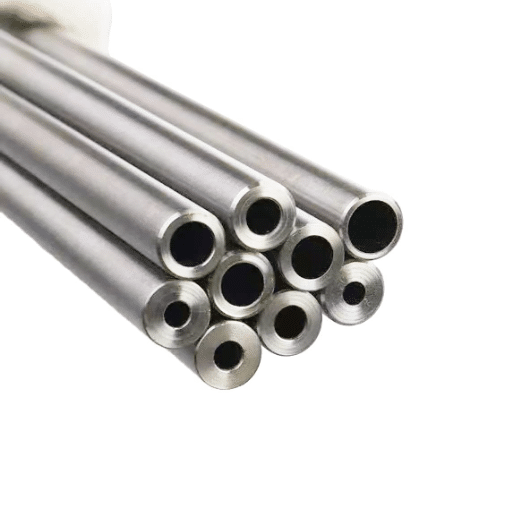
Manufacturing Process of Seamless Steel Pipes
The production of seamless stainless steel pipes utilizes a specific technology integrated for verifying accuracy and distance across high-pressure steel pipes. The first step is the selection of adequate, high-quality raw materials, that is, solid cylindrical steel billets. These billets are subjected to extreme temperatures in a rotary hearth furnace, which renders them plastic.
They are first pre-heated before the piercing process, which is usually done with a perforation tool that creates a cylindrical hollow core. This is usually done using the rotary piercing technique, whereby a set of angled rolls pierce and turn the billet into a hollow shell. A mandrel mill or plug mill is employed to lengthen the hollow shell to the specifications of the desired thickness along the entire length of the pipe
Encased internal processes, such as calibrating and scaling, sort the pipes into the specified exact measurement tolerances. In this part of the work, the pipe undergoes rolling by a set of rolling mills, cut to a specific size and desired hole diameter, and the wall thickness is drilled. Furthermore, the pipes undergo heat treatment to improve the mechanical attributes like toughness, tensile strength, along reliable operational compliance.
Lastly, high precision non-destructive testing methods, namely ultrasonic testing and eddy current testing, are used to identify any surface or internal defects. Such quality control ensures that seamless steel pipes satisfy the exacting standards of the oil and gas, aerospace, and power generation industries, where their seamless production requires unparalleled reliability. The seamless production system is technically sophisticated, but it results in products that are highly durable, resistant to corrosion, and withstand high pressure.
When to Use Seamless Steel Pipes?
Seamless steel pipes are the preferred choice for applications that require strength, durability, and performance as they operate under extreme conditions. Their rough, even construction ensures superior pressure resistance, which makes them suitable for extremely high-pressure environments like oil and gas pipelines, power generation systems, and chemical processing plants. Unlike welded pipes, these tend not to corrode or crack, thus making them reliable as they provide longevity.
These pipes also cater best towards applications that require precision surface finishes, such as in aerospace engineering. Seamless pipes are preferred for hydraulic systems as they undergo a lot of pressure changes without any structural compromise. These pipes are also used in automobiles, as seamless steel pipes are used in roll cages and fuel injection systems due to their precision and strength.
Moreover, seamless steel pipes tend to be a lot more advantageous in corrosive environments such as offshore drilling and subsea operations due to their enhanced resistance against both oxidation and chemical degradation. Their ability to withstand severe high temperatures and sub-zero conditions further cements their seamless steel pipe’s significance across multiple industries needing uncompromised performance. This underscores their versatility in complex scenarios like heat exchangers alongside cryogenic applications. They provide utmost importance in the said industries due to the high demand.
Comparing Seamless and Welded Pipes
For identifying seamless pipes vs welded pipes, one must review their different operational fabrication methods, including their construction design, stress conditions, and performance metrics. The construction of seamless pipes consists of more than one process. The subsections are: extrusion processes, piercing of solid billets, and seamless construction. The absence of joints allows a single unit must make them withstand tremendously high amounts of pressure without any danger of succumbing to failure at the weld seam. For greater safety, oil and gas exploration, automotive systems, and power generation industries are particularly fond of seamless pipes that are considered to be safe and effective in highly severe settings.
Welded pipes, such as pipes that are welded, are designed and rolled using steel plates or strips that can be welded into the shape of a cylinder. To further improve these basic welding methods, there are Advanced Welding methods such as Electric Resistance Welding (ERW) and Submerged Arc Welding (SAW). These modern methods aid in preventing seam-based flaws, which brings great cost effectiveness for welded pipes, making them extremely cheap for low to medium pressure conditions. Because of reasonable pricing and their reliability regardless of the size, these pipes are widely used in construction, water transportation, and even the chemical industries.
The selection of seamless and welded pipes is based on operational pressure, economic factors, and environment. While welded pipes are preferred for low-performance and budget-type projects, moderate-performance and demanding environments require seamless pipes.
Common Challenges and Solutions with Welded and Seamless Pipes
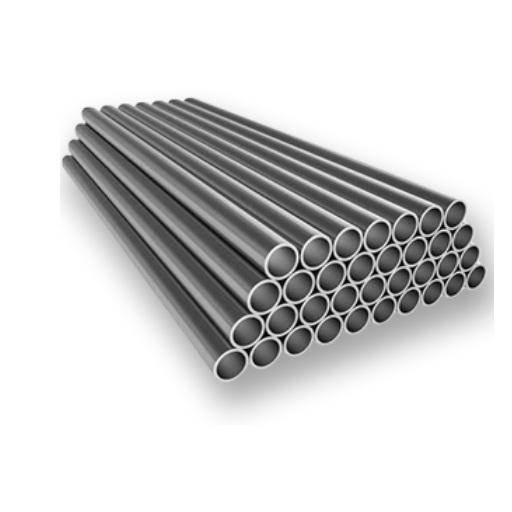
Addressing Corrosion in Pipes
Corrosion is one of the main issues in the upkeep and service life of welded and seamless pipes. It is extended by environmental conditions such as humidity, the existence of corrosive agents such as chlorides or sulfur compounds, and operational conditions like temperature and pressure. Eventually, corrosion can cause thinning of the pipe wall, leakage, or catastrophic failure, which poses a threat to safety and operational efficiency.
Several measures are taken to prevent corrosion, including stainless steel and alloys of nickel and chromium, which are less susceptible to corrosion. In cases of extreme corrosion risk, more complex materials like titanium alloys and duplex stainless steel may even be considered. Cathodic protection techniques like sacrifice and impressed current anodes are commonly used in electrochemically active pipes placed on the ground or in water. Moreover, epoxy, zinc-based linings, or even polyethylene can be used as passive protection as coatings.
The combination of frequent monitoring alongside advanced methods such as ultrasonic testing (UT) and electromagnetic acoustic transducers (EMAT) facilitates the early detection of corrosion. Real-time monitoring of structural integrity and timely action upon detecting anomalies is possible through predictive maintenance enabled by sensors and machine learning algorithms, which is gaining prominence. The adoption of these methods and materials helps industries reduce risks and maintenance costs while prolonging the lifespan of pipelines.
Handling High Temperature Conditions
Pipelines that operate at high temperatures confront distinct difficulties that require advanced materials, engineering methods, and monitoring mechanisms for safety and performance. High temperatures can accelerate degradation processes such as creep, oxidation, and thermal fatigue, which can compromise the structural integrity of the pipeline. To address these challenges, specialized alloys such as chrome-molybdenum steels or nickel-based superalloys are often used because of their strength and resistance to high-temperature environments.
As with the other factors, thermal expansion is also critical in high-temperature pipeline systems. Expansion joints, flexible couplings, or pipe anchors are crucial design components that must be included to alleviate stress due to temperature fluctuations while preserving system stability. Moreover, these systems reduce the overall impact on system stability. Alongside thermal expansion, insulation systems such as ceramic coatings or high-performance thermal barriers are equally important in controlling the temperature within the pipeline and reducing heat loss.
There is a growing adoption of advanced monitoring technologies such as fiber optic sensors and acoustic emission systems that dynamically measure temperature and track changes in material properties in situ in high-temperature environments. Such information improves maintenance strategies and mitigates failure risks. Alongside advanced computing tools for modeling and simulation, engineers can design and optimize safe and reliable pipeline systems meant to endure prolonged periods of extreme thermal stress, with extreme control provided that the system undergoes vetted, consistent, rigorous testing.
Ensuring Weld Quality and Integrity
In building and maintaining infrastructure, including but not limited to pipelines, pressure vessels, and other structural frameworks, weld quality and integrity are one of the most important aspects of the fabrication process. An understanding of material properties, welding procedures, and environmental factors enables the proper accomplishment of weld integrity. Advanced non-destructive testing (NDT) techniques such as ultrasonic testing, radiographic inspection, and phased array ultrasonic systems are capable of micro-level discontinuity detection. These techniques allow engineers to detect porosity, cracks, or incomplete penetration that would compromise the structural soundness of a component.
The monitoring of the heat-affected zones (HAZ) is also important in avoiding further susceptibility to metallurgical deterioration, and process optimization tools can be used to control thermal input and cooling rates during welding. Alongside modern computational modeling, including finite element analysis (FEA), engineers can simulate stress distribution within welded joints undergoing various load conditions to predict potential failures before deployment in the field.
The most recent developments in materials science, real-time data capture technologies, and streamlining workflows are an industry win in achieving advanced welding results. These factors, alongside meticulous checks, guarantee that welding meets safety standards and that industrial structures remain durable while functioning.
References
- Eagle Stainless Tube & Fabrication: This source discusses the differences between welded and seamless tubing, focusing on manufacturing processes and cost implications.
- MBM Tubes Blog: This article explains the distinctions between welded and stainless steel seamless pipes, highlighting their respective strengths, corrosion resistance, and applications.
- Future Market Insights: A report on the stainless steel welded pipe market, detailing its growth trajectory and applications across industries like construction and automotive.
Frequently Asked Questions (FAQ)
Q: What are the main differences between seamless and welded pipes?
A: The main differences between seamless and welded pipes lie in their manufacturing processes and applications. Seamless pipes, like stainless steel seamless pipes, are made without a seam, offering higher pressure ratings and uniformity. Welded pipes, such as electric resistance welded (ERW) and longitudinal submerged arc welded (LSAW) pipes, are formed by welding the seam, making them cost-effective and suitable for structural applications.
Q: Why is stainless steel pipe preferred for certain applications?
A: Stainless steel pipe is preferred due to its high resistance to corrosion, durability, and strength. High-quality stainless steel pipes are ideal for environments exposed to moisture and chemicals, providing longevity and low maintenance compared to other materials like carbon steel.
Q: How does the electric resistance welded (ERW) process work?
A: The electric resistance welded (ERW) process involves forming steel plates into cylindrical shapes and welding the seam using electric resistance. This process is efficient for producing pipes with precise outside diameters and is commonly used for producing carbon steel welded pipes.
Q: What are the advantages of using LSAW pipes?
A: LSAW pipes, or longitudinal submerged arc welded pipes, offer advantages such as high strength, large diameter capabilities, and thick wall thickness. They are suitable for structural applications and transportation of oil and gas, providing reliability and durability.
Q: What are the common applications of carbon steel pipe?
A: Carbon steel pipes are commonly used in industries such as oil and gas, water transmission, and construction. They are valued for their strength, durability, and cost-effectiveness. Carbon steel welded pipes are ideal for low-pressure applications, while seamless pipes are used for high-pressure environments.
Q: How do pipe fittings complement the use of welded and seamless pipes?
A: Pipe fittings are essential components that connect pipes, change directions, and manage flow within a piping system. Stainless steel pipe fittings, for example, provide a reliable connection for both welded and seamless pipes, ensuring leak-free and efficient fluid transport.
Q: What factors influence the choice between seamless or welded pipes?
A: The choice between seamless or welded pipes depends on factors such as application requirements, pressure ratings, cost, and availability. Seamless pipes are preferred for high-pressure applications, while welded pipes are cost-effective for standard and structural uses.

